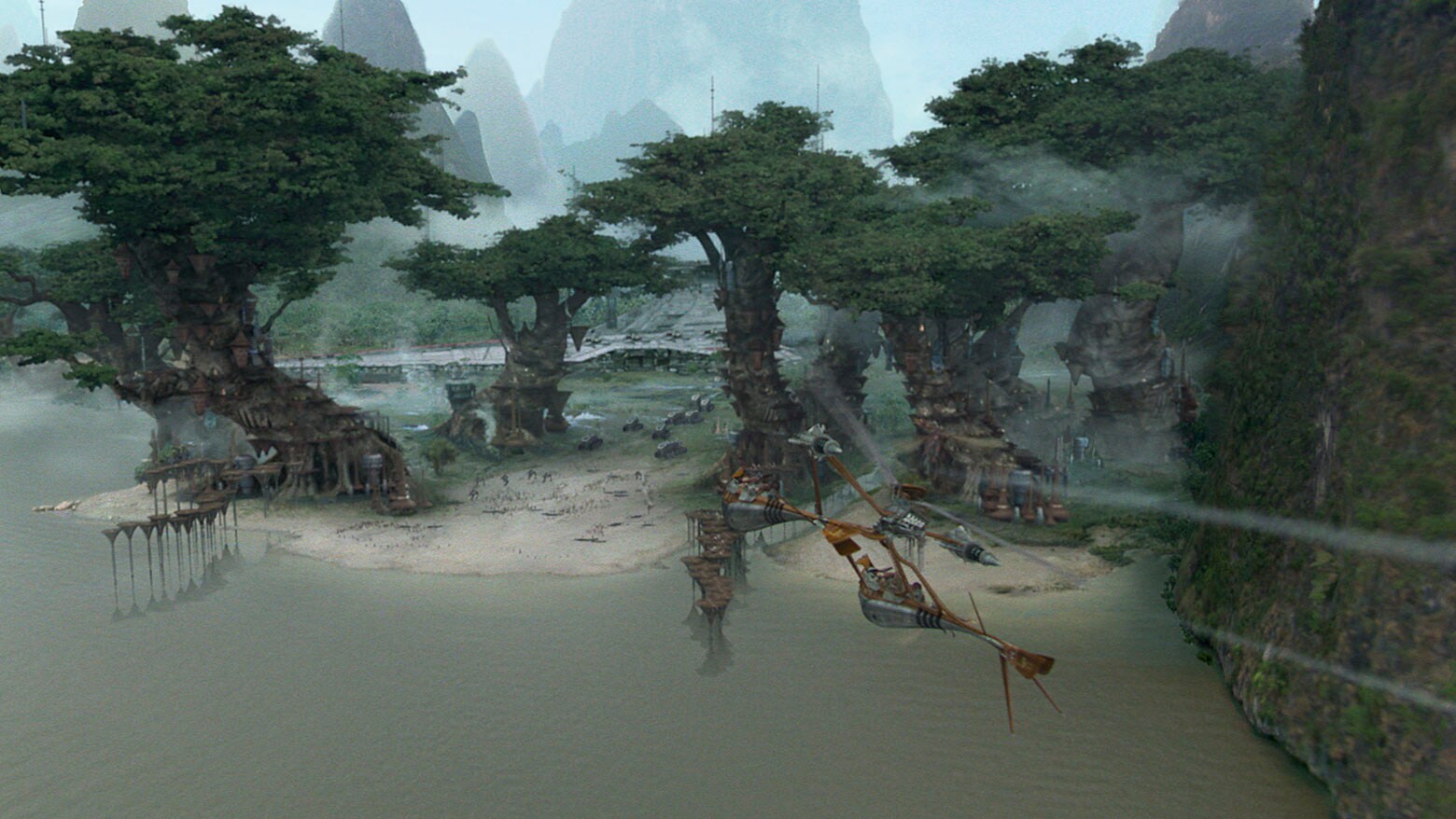
Offering slightly better defence than grassland at the cost of greater movement difficulty, forest can be useful for most units, though cavalry have difficulty moving and defending in the close-packed trees. Steep and rugged terrain, mountains offer superb defence, but at the cost of great movement difficulty - most cavalry and heavy infantry cannot move in them at all! The primary exception to this is dwarves, who are at home in the mountains and are not slowed by them at all. Snow-covered hills offer the same movement and defensive considerations as uncovered hills. While often covered with snow, large drifts tend not to pile up on hills to slow movement. They are also favoured terrain for Orcs and Dwarves, who move considerably faster in them than other races. While more difficult for many units to travel, hills offer better defence than open ground, and can be tactically important.

Offering shelter from the cold and snow around them, snow villages offer the usual healing and gold benefits, along with considerably improved defence when compared to the surrounding terrain. With the possible exception of the Yeti, if it exists, most units prefer to avoid tundra where possible. Open ground made difficult by deep drifts of snow, nearly all land units find tundra both difficult to move in and hard to defend.

Offering the usual healing, gold and defensive benefits, human villages are unremarkable compared to other types of villages. In addition to this, villages offer improved defence for most foot units, making them easier to hold than most terrain. Offering both healing to units occupying them and gold to their controller, villages are important strategic points on many maps. The most common type of open terrain, Grassland is easy for all units to move across, though it does not offer much by way of defence. Whether trampled into dust by constant use or laid bare by blight, Dirt offers no real differences to Grassland when it comes to movement or defence. Units move across roads no faster than across other open terrain, and gain no defensive benefit. While stone roads tend to follow the easiest route from place to place, making them perfect for travellers, they offer little benefit in warfare. Patches of dune and drifting sand, most units find sandy terrain more difficult to cover than firm ground, and have poorer defence as well. Keep in mind that aquatic units can swim underneath bridges. Spanning across bodies of water, bridges offer both faster movement and better defence for land units than attempting to ford, making them key strategical points on many maps. Every bit as difficult as snow to move across, very few units enjoy benefits on ice. In the harsh of winter, lakes and rivers - and sometimes even coastal waters - can freeze over, becoming ice. Easier to defend than barren swamp, they offer the same gold and healing as most villages.

Usually built upon raised platforms above the soggy swampland, swamp villages offer respite from the difficult terrain around them for most units. Certain aquatic units, however, find them very favourable terrain. Defensively, they are unremarkable structures.Ī morass of sodden soil and bog, cattails and quicksand, swamps are treacherous terrain for the majority of units, both hard to move through and difficult to defend. Of course, it has little impact on flying units, save for the spirits of the dead, who are loathe to cross running water.Ĭarved from coral reefs and rocky outcroppings, Merfolk villages are primarily underwater, making them difficult for land-dwellers to defend, though they do offer the usual gold and healing benefits of villages.Ī short wooden wharf designed for ships to dock at, land units can walk on wharves and sea units swim under them. Several feet deep, shallow water is shallow enough for most land units to ford, but deep enough to severely hinder movement and defence. Very few units can move in deep water, save the merfolk who dwell there and the unswerving, unbreathing undead.

The deepest of rivers and lakes and the majority of oceans, deep water is too deep for even tall units to wade across.
Battle for wesnoth terrain draw order plus#
The distance a unit can see is determined by the furthest hex it could move to, plus one hex. While it is possible to see the outline of terrain, the movements of enemy units are concealed except within direct view of your own units. When faced with unknown terrain, areas not yet visited are covered in a shroud of ignorance, represented as pitch blackness on the map.


 0 kommentar(er)
0 kommentar(er)
